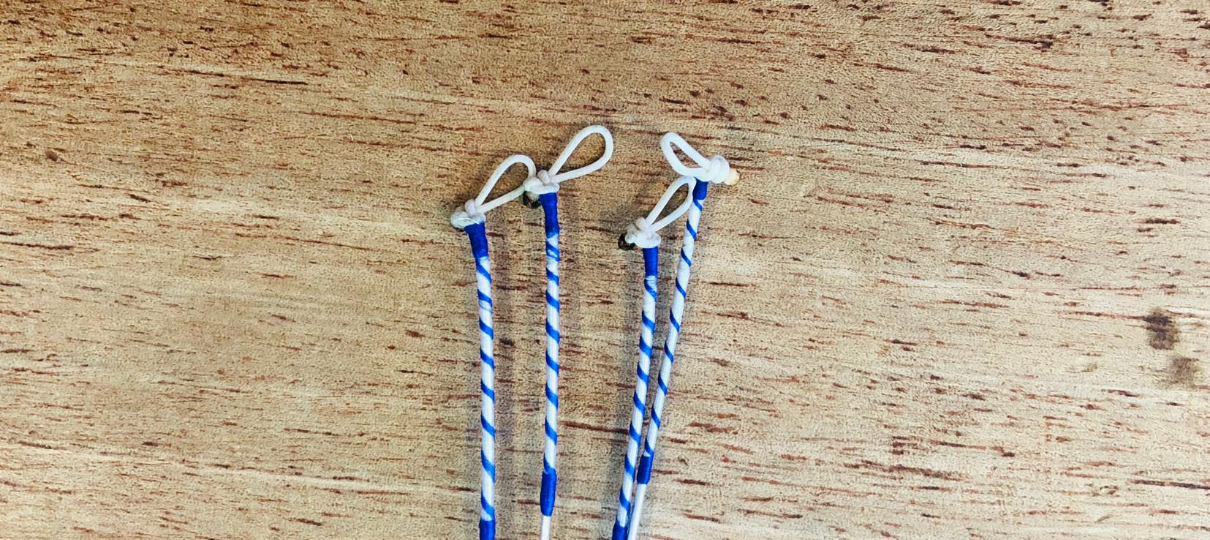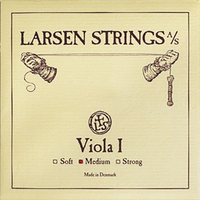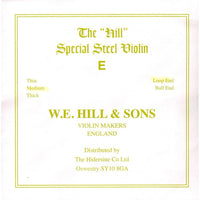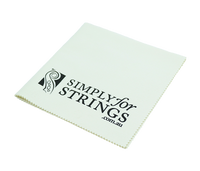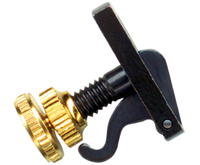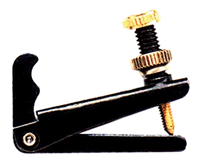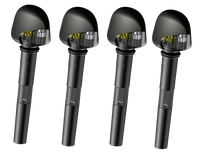So you want to know about loop and ball end strings?
Most modern synthetic core or metal strings have a loop on the end with a metal ball in it, but some, especially some of violin E strings and an occasional viola A, are available with a loop and no ball. So what’s the reason for the two different options?
Before the invention of the complete tailpiece, fine tuners were an extra item that were fitted to the string hole in the tailpiece. This type of fine tuner usually protrudes from the tailpiece in the direction of the bridge and has a claw sticking out, to hold the ball end of the string. The result is that there is less string length between bridge and tailpiece. Some intermediate and advanced string players have this traditional style tailpiece with a fine tuner fitted only for the E and maybe A string (violin); A string only (viola and cello).

Even more traditionally, some professional string musicians prefer to use a tailpiece with no fine tuners at all. This allows for the full length of string between bridge and tailpiece, which then gives better overall vibration and tone. With these tailpieces, the ball end is inserted through a hole in the tailpiece and is held in place by tension.
A lot of the violins you’ll see in music stores today are fitted with tailpieces with in-built fine tuners. There is a two-pronged claw inside the tailpiece, into which you insert the ball end of the string. The claw clutches the ball and holds the string in place. Most beginner and intermediate instruments on the market today have this type of tailpiece, as it can save a lot of time in tuning. For students, ball end strings and fine tuners for every string will mean more accurate tuning and less time lost in tuning. The ball end strings also have a reputation for lasting longer.
Why choose one over the other?
This is really about preference.
For more advanced musicians, the suggestion is to try both options. If you can hear an improvement in the tone quality with a loop end E string, then let that be your choice.
Many musicians prefer the convenience of in-built/fine adjusters because:
- Tuning with the pegs can sometimes be tricky, and it can be very hard at times to actually get the strings perfectly in tune.
- Younger string players can’t tune with the pegs at all in many cases, because they simply don’t have enough hand strength.
- Frequent tuning with the pegs offers many more chances to break strings accidentally.
- Tuning with pegs in certain weather conditions can be very difficult.
For some, the desire to make tuning easier and more accurate has led to the installation of tuning pegs with internal gears, such as Wittner Finetune Pegs. They look like ebony but have a mechanism inside which makes the peg operate as both major and fine tuning. They are an excellent alternative, and can be fitted by an experienced luthier. They eliminate the need for fine adjusters on the tailpiece, and free up the instrument to give its best resonance. Give us a call to discuss this option for your instrument today.
Further thoughts for your consideration:
Some string manufacturers and makers of higher quality tailpieces have advised us that in their opinion, strings perform better if they are only tuned using the pegs.
- There is a small wave of opinion among some of these experts that believes fine tuners on the tailpiece have both the ability to damage your strings and to reduce the quality of sound they produce.
- This second thought is based on the added weight of the fine tuners on the lower end of the strings. When your tailpiece weighs as little as possible, the string is left free to vibrate more freely, giving better resonance and overtones.
- Lightweight tailpieces with built-in fine tuners are seen as better than tailpieces with heavy metal adjusters retrofitted, because the retrofitted adjusters reduce the length of string between bridge and tailpiece, reducing the vibration length.

Care tips for all strings:
- extend their life and the quality of sound by cleaning them with a dry, soft (but not fluffy) cloth every time you finish playing.
- Use the string protectors, grommets or tubes that are supplied with the strings - they will extend the life, and with the E string they can also help reduce the possibility of “whistling”.
- When fitting new strings, check them carefully before installing: all the manufacturers have a disclaimer that there is no warranty once they have been fitted.
- When fitting new strings, line the bridge and nut grooves with graphite from a soft pencil (2B or less) to lubricate the groove and reduce drag on the strings.
- When fitting new strings, raise the tension carefully. Remember they are new, and are being stretched out for the first time since manufacture. Tuning up too quickly can cause them to snap.
- When tuning with the pegs, lower the pitch by unwinding the peg a little so as to unstick the string from the bridge and nut grooves before you raise the pitch.














